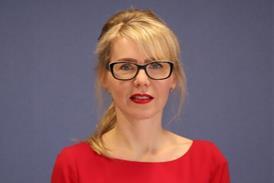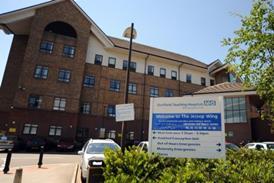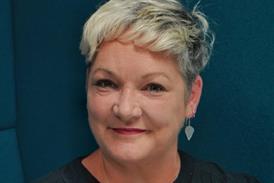Why did one trust decide to return its estates and facilities services back in-house, what were the challenges and was it worth it in the end? Nick Chatten and colleagues explain.
Get involved
Are you involved in a patient experience discussion in HSJ’s LinkedIn group which you would like highlighted in Resource Centre? Let us know by emailing hsjresourcecentre@emap.com with the subject line “LinkedIn”.
It is seven months since Colchester Hospital University Foundation Trust brought all of its estates and facilities services back in-house.
In so doing the trust could be seen as swimming against the tide, ignoring the conventional wisdom that acute providers have enough to be getting on with without trying to manage what, for many organisations, are seen as non-core activities.
Why then did the board take this decision? How did it go about managing the change? And what lessons has the trust learnt from the experience that might be applicable to others who are facing decisions in the next few months about their soft and hard FM services?
Colchester Hospital University Foundation Trust is a 660-bed acute provider operating principally from two main sites - Colchester General Hospital and Essex County Hospital - providing care to the population of north east Essex and beyond.
The trust’s income is £225m and before bringing estates and facilities services in-house it employed about 3,500 staff. The trust has a good record on the patient environment, with triple excellent patient environment action team scores on both hospital sites since 2009.
Why in-house?
In reaching the decision to bring estates and facilities services in-house the board considered three main objectives:
Patient focus To provide the opportunity to re-engineer the service model to one more suited to meeting current clinical needs.
Future proofing To deliver flexibility for future requirements, providing a greater degree of control in the process of change management at a pace set by the trust.
Financial control To achieve the required efficiency savings target in 2011-12, and to establish the context in which savings could be made in subsequent years.
The board considered that in delivering its overall objectives, the contribution of the estates and facilities services - for which the outsourced contract cost the trust £13m each year - could not be ignored. If we got these services right they could make a significant contribution to the future success of the organisation.
Entering a period of significant change in the NHS, the trust needed to be responsive and nimble to the challenges the changing NHS landscape would throw up; in-house support services would allow for such a response.
In reaching the decision to come in-house it was increasingly apparent that the output-based specification that had been in place over the past 14 years gave the trust little control over how services were delivered and how they were aligned to support clinical care. This made it difficult for the trust to achieve added value and efficiency from the contract.
The board felt that at a time when financial pressures on the organisation were expected to increase, it was appropriate to gain greater direct control over its estates and facilities services and to integrate them into the overall approach the trust was taking to redesigning patient pathways and improving the patient experience.
The board agreed that, as far as practicable, the services should be transferred with as little disruption as possible to the way they were provided. This would give staff stability and allow time for more detailed planning of new service models to be implemented in 2012 and beyond.
The board’s decision to bring all services in-house was taken on 9 June 2011. Directors wanted action quickly, requiring services to be in-house by 1 October 2011 - just 16 weeks.
Very quickly a mobilisation team was formed from the trust’s small facilities management team, whose role previously had been focused on contract management and quality monitoring; other trust departments including HR, training, IT, infection control, fire safety, risk management, procurement, finance, communications; and a team of six interim managers and consultants in project management, FM disciplines and HR issues.
The transition was managed using well established project methodologies. The full mobilisation team met weekly to report progress against the plan identify issues and concerns and agree action.
The core team of the project director, project manager and associate director for estates and facilities met daily at 8.30am to track progress and to identify issues that needed immediate resolution. The director of operations, as board sponsor, met with this senior team weekly to review progress.
Local union officials were keen to work with the mobilisation team. Weekly briefings and issues meetings were held to maintain good staff engagement.
A priority was to maintain positive relations with the outgoing contractor’s on-site management team. This was important, not just for the maintenance of acceptable services to patients during the remainder of the contract but because it was through them that we could access the 500 employees who would join the trust on 1 October.
Communication with the transferring staff was important from the start. The trust’s chief executive wrote an open letter to welcome them and to set out what would happen in the next few weeks. We published newsletters and circulated them to all staff transferring to ensure that emerging questions and concerns were addressed.
The time scale was insufficient to allow for the mobilisation to make any significant changes in the way services were provided - they would not materially change on day one. The previous staff rosters transferred over as they stood and, consequently, any changes to working arrangements will form part of future consultations with the staff concerned.
We will need to continue to deliver cost efficiencies and improvements to the patient experience year-on-year. We are now developing plans to review all our transferred third party supplier contracts, for example, for linen services and patient meals, to ensure we are achieving best value.
Fostering team spirit
We are also looking at how we provide services on wards, particularly at the interaction of housekeeping and ward catering hosts, to see if we can design these roles in a way that improves the patient experience.
Although the time scale was very tight, the new arrangement was mobilised successfully within 16 weeks of the board’s decision by:
- incredible teamwork from a diverse but committed group brought together for the task;
- committing the right resources to make it happen, including buying in skills where these were not easily available in the trust within the time allowed;
- strong project management and clear lines of accountability and responsibility;
- delegation from, and clear accountability for delivery to, the executive and board;
- robust communication, using the weekly project group meetings kept everyone involved up to speed and fostered a great team spirit.
It is still early days, although we are already seeing evidence of the benefits we are aiming for. We appear to be close to achieving the cost savings we forecast from the service in 2011-12. More importantly though, from a patient perspective, we saw an overall improvement in our National Patient Safety Agency audit cleaning standards scores in October and November compared with the previous four months.
Changed culture
A Care Quality Commission review of compliance undertaken in November reported very positively on cleaning standards and noted: “Staff said they were impressed with the standard of cleanliness since the service was moved back ‘in-house’. The general environment was clean and tidy, as were the lockers, beds and furniture.”
There is still much to do. Building a new team and instilling a changed culture takes months and years, not days and weeks. Working with staff and users to redesign service models that reflect patients’ needs will take time and considerable effort. We are, however, committed to placing estates and facilities services at the heart of our work to improve services for patients.
Nick Chatten is special projects director at Colchester Hospital University Foundation Trust. Philip Kitchener is the trust’s associate director for estates and facilities and now manages the new in-house services. Marcus Hill of Comet Consulting acted as the project manager.
Find out more
The authors talk more about how the TUPE process was managed, including the issues around payroll and IT systems, and how the trust addressed organisaational culture with a set of nine charactersitics to help define the in-house service, at www.hsj.co.uk/colch-fm.
























2 Readers' comments